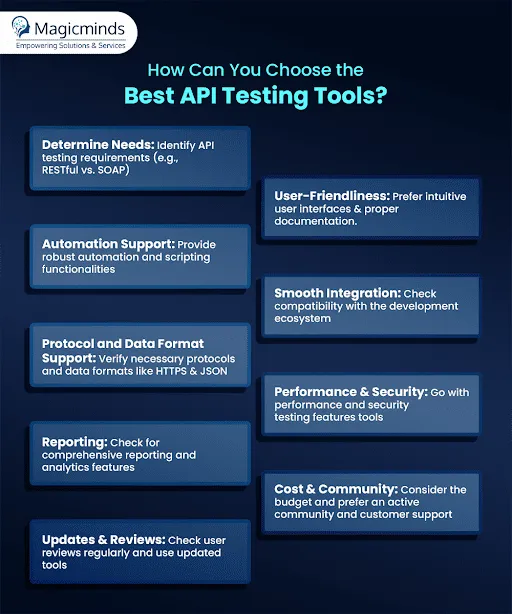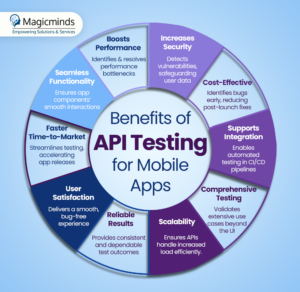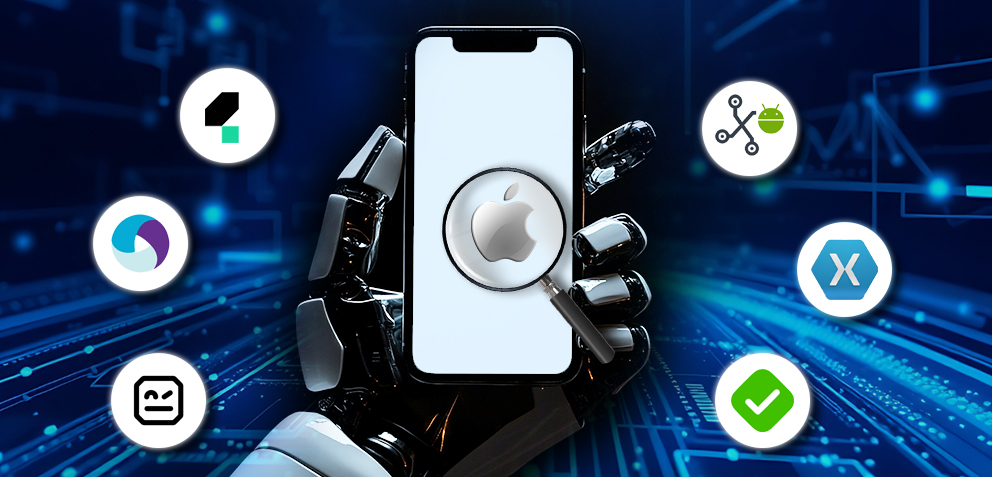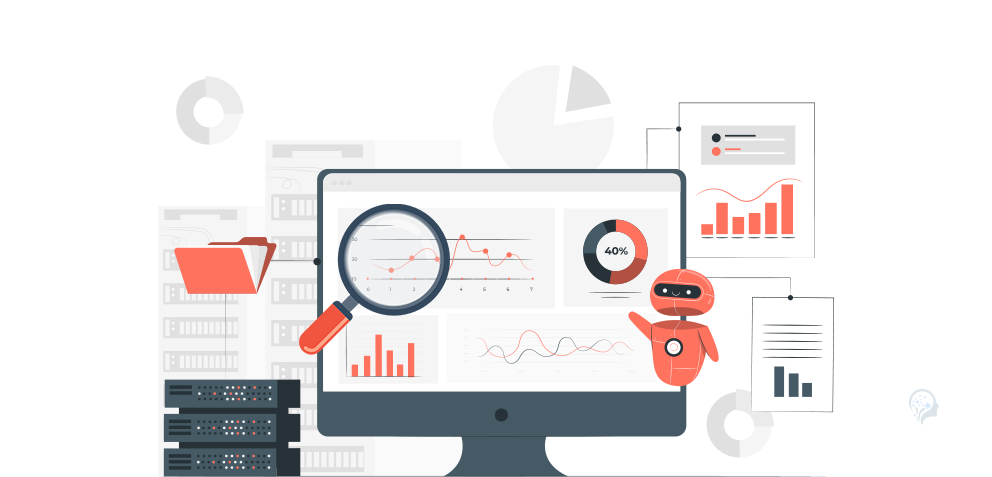Mastering API Testing for Mobile App Success

Table Of Contents
 Stay In-the-loop
Stay In-the-loop
Get fresh tech & marketing insights delivered right to your inbox.
Share this Article
Tags
Category
- .Net Developer
- Adtech
- Android App Development
- API
- App Store
- Artificial Intelligence
- Blockchain Development
- Chatbot Development
- CMS Development
- Cybersecurity
- Data Security
- Dedicated Developers
- Digital Marketing
- Ecommerce Development
- Edtech
- Fintech
- Flutter app development
- Full Stack Development
- Healthcare Tech
- Hybrid App Development
- iOS App Development
- IT Project Management
- JavaScript development
- Laravel Development
- Magento Development
- MEAN Stack Developer
- MERN Stack Developer
- Mobile App
- Mobile App Development
- Nodejs Development
- Progressive Web Application
- python development
- QA and testing
- Quality Engineering
- React Native
- SaaS
- SEO
- Shopify Development
- Software Development
- Software Outsourcing
- Staff Augmentation
- UI/UX Development
- Web analytics tools
- Wordpress Development
Ready to witness your mobile app working fine with smooth API Testing? You have landed in the right place. Imagine your app running seamlessly across all devices and handling requests smoothly. Well, that’s what great API testing can do for you!
In this article we will travel through the world of mobile app API testing and learn stepwise guidance to conduct mobile app API testing and much more. So, fasten your seat belt and let’s embark on this API testing for mobile app journey together!
Happy reading!
API Testing: A Brief Understanding
API testing is a software testing practice that tests the APIs directly — from their functionality, reliability, performance, and security. API testing is part of integration testing, which effectively validates the logic of the build architecture within a short amount of time. While most functional testing involves testing a user interface like a web page or a .NET form, API testing bypasses a user interface and communicates directly with an application by making calls to its APIs.
However, partnering with an API testing service provider ensures reliability and functionality in API testing while reducing bugs.
Essential Methods To Perform Mobile App API Testing
There are several methods exist for mobile app API testing to maintain their workflow accurately. Every method ensures API aspects, ensuring reliability and performance.
Manual Testing
As the name suggests, manual testing involves human intervention in testing APIs. This process includes you to send requests to the API and analyze the responses to check their accuracy and effectivity. Although manual testing helps in detecting simple errors.
Automation Testing
Automated testing utilizes tools to run tests on API automatically. Some robust tools can run multiple tests quickly and efficiently, minimizing errors. This saves time and decreases repetitive tasks, streamlining an d automating the process and enhancing the software performance.
Load Testing
This analyzes how API performs under heavy usage. You can simulate multiple users accessing the API all together to understand whether it can handle the traffic or load. This enables you to figure out early any issues that might occur during the high usage times.
Functional Testing
To put it simply, this testing checks whether the API functions or works correctly as it is supposed to do. You might test several API functions to ensure they work as expected.
Security Testing
It maintains the security of API, safeguarding it from potential threats. It checks the vulnerabilities that any hacker can try to exploit. The main aim of this test is to prevent unauthorized access andf protect vital data, maintaining cyber security.
Usability Testing
This checks the API’s usability, ensuring seamless API integration with the other apps hassle-free. This enhances the user experience of those using API.
Get Seamless API Performance With Our Robust API Testing Services!
API Testing Tools
Choosing the right API testing tools is essential to determine the test’s success and efficiency. You must analyze different variables, such as usability, scalability, cost-friendliness, and compatibility with multiple current systems. Different types of tests also play a key role in choosing the right tool. We’ve made a list of API testing tools for your needs. Have a look:
- SoapUI: The tool focuses on testing API functionality in SOAP and REST APIs and web services.
- Apache JMeter: An open-source tool for load and functional API testing.
- Apigee: A cloud API testing tool from Google that focuses on API performance testing.
- REST Assured: An open-source, Java-specific language that facilitates and eases the testing of REST APIs.
- Postman: A Google Chrome app used to verify and automate API testing.
- Katalon: An open-source application that helps with UI automated testing.
- Swagger UI: An open-source tool that creates a webpage that documents APIs used.

Step-by-Step Guidance To Conduct API Testing
Let’s discuss how to navigate through the API testing step-wise.
#1 Environment Setup for API testing
It is important for testers to have clear goals and objectives they want to achieve through API testing so that they can select the correct tool for testing the APIs.
List of Popular API Testing Tools
The foundation of effective API testing lies in choosing the right tools that best fit the project requirements and team workflow. We will share a bunch of API tools that are widely used due to their comprehensive functionalities. Let’s have a quick look at those tools:
- Postman: Popular for manual testing and exploration of APIs.
- SoapUI: Useful for both SOAP and REST API testing.
- JMeter: Suitable for performance and load testing.
- Swagger: This is for API documentation and testing (especially for REST APIs).
- Insomnia: Another option for REST and GraphQL API testing.
Configure the Environment
Once the Tools have been finalized, we need to set up the environment for API testing.
- Development Environment: For testing during the development phase.
- QA Environment: A QA environment during the testing phase.
- Staging Environment: A pre-production environment that closely resembles the production environment for final testing.
- Production Environment: Make sure the tests do not affect live users. U It is advisable to use mocking or sandbox environments when necessary.
#2 Test Data Creation
Create or gather the data needed for testing:
- Mock Data: Use mock data or services if real data is not available or suitable for testing.
- Test Databases: Set up a test database that mirrors the production schema but contains test data.

#3 Designing of Test Cases
Create a test suite covering various scenarios:
- Positive Tests: Check and verify that the API behaves correctly with valid inputs.
- Negative Tests: Check and verify that the API handles invalid inputs or error conditions correctly.
- Edge Cases: Test boundary conditions and unusual scenarios.
#4 Integrate with CI/CD Pipeline
- Continuous Integration: Integrate your API tests into a CI/CD pipeline to run tests automatically when code changes occur. Tools like Jenkins, GitHub Actions, or GitLab CI can be configured to trigger API tests.
#5 Monitoring and Logging Results
Implement monitoring and logging to track test results:
- Logging: Capture detailed logs of API requests and responses.
- Monitoring: Use tools to monitor API performance and availability in real time.
#6 Run and Maintain Tests
- Execute Tests Regularly: Schedule regular test executions to ensure the existing APIs are working as expected.
- Maintain Test Scripts: Regularly update your test scripts to sync with the APIs’ changes.
Experience Future of Testing with Our Automated Testing!
Share Your Project Requirements!API Testing for Mobile Apps
API testing is very important for mobile apps in terms of validating the interactions between the apps and its backend services. It helps in ensuring the functionalities and performance of the app in working as expected. Through API testing, testers ensure that the API endpoints return the correct responses based on the input provided.
API testing in the context of Mobile Apps:
#1 Network Testing
Testing Apps under various networks helps ensure the APIs’ robustness and reliability across different connectivity types. It includes assessing response times, data transfer speeds, and error handling in conditions like low bandwidth. This testing approach ensures that the mobile apps perform well and maintain their functionalities regardless of network fluctuations.
#2 Device and OS diversity
Mobile App API testing involves testing the APIs’ performance and functionalities across different devices and operating systems. This includes testing the APIs on different devices, screen sizes, and OSs to ensure consistent behavior.
#3 Background and foreground testing
This testing helps in evaluating the API’s performance and behavior when the app is running in the foreground versus when it’s running in the background. Testers check if the APIs are able to handle interruptions, like switching apps or receiving notifications, efficiently by maintaining consistent performance.
#4 Battery and Data Usage
This testing is done to monitor how APIs impact battery performance and data consumption, which is crucial for maintaining app performance and providing a good user experience.
#5 Platform-specific APIs
This API testing refers to APIs that work for specific OSs like Android or iOS. This type of testing is done to ensure that the APIs work well when integrated with platform-specific components, such as push notifications or location services.
#6 Intermittent Connectivity
This is done to check how the APIs handle connectivity fluctuations, such as a scenario where the connection drops suddenly or slows down drastically. By testing these scenarios, we can ensure that the APIs handle the errors and recover efficiently.
Mobile App API Testing Solutions Powered By Magicminds!!
API testing is critical to software development, providing reliability, quality, performance, and security. A good strategy can ensure the success of API tests, accelerating the software development phase and offering boosted software quality. However, this requires hiring API testing services like Magicminds!
- 70% Bugs Reduction
- 55% Software Performance Improvement
- 45% Cost-Saving
- 35% User Satisfaction Increased
- 85% Test Coverage Enhanced
At Magicminds, our team of experts meticulously follows API testing best practices while leveraging tools tailored to your project needs. Partner with us to unlock robust API testing services today. Contact Us!
Ready to witness your mobile app working fine with smooth API Testing? You have landed in the right place. Imagine your app running seamlessly across all devices and handling requests smoothly. Well, that’s what great API testing can do for you!
In this article we will travel through the world of mobile app API testing and learn stepwise guidance to conduct mobile app API testing and much more. So, fasten your seat belt and let’s embark on this API testing for mobile app journey together!
Happy reading!
| Table of Contents!
API Testing: A Brief Understanding Essential Methods To Perform Mobile App API Testing API Testing Tools Step-by-Step Guidance To Conduct API Testing API Testing for Mobile Apps Mobile App API Testing Solutions Powered By Magicminds!! |
API Testing: A Brief Understanding
API testing is a software testing practice that tests the APIs directly — from their
functionality, reliability, performance, and security. API testing is part of integration testing, which effectively validates the logic of the build architecture within a short amount of time. While most functional testing involves testing a user interface like a web page or a .NET form, API testing bypasses a user interface and communicates directly with an application by making calls to its APIs.
However, partnering with an API testing service provider ensures reliability and functionality in API testing while reducing bugs.
Essential Methods To Perform Mobile App API Testing
There are several methods exist for mobile app API testing to maintain their workflow accurately. Every method ensures API aspects, ensuring reliability and performance.
Manual Testing
As the name suggests, manual testing involves human intervention in testing APIs. This process includes you to send requests to the API and analyze the responses to check their accuracy and effectivity. Although manual testing helps in detecting simple errors.
Automation Testing
Automated testing utilizes tools to run tests on API automatically. Some robust tools can run multiple tests quickly and efficiently, minimizing errors. This saves time and decreases repetitive tasks, streamlining an d automating the process and enhancing the software performance.
Load Testing
This analyzes how API performs under heavy usage. You can simulate multiple users accessing the API all together to understand whether it can handle the traffic or load. This enables you to figure out early any issues that might occur during the high usage times.
Functional Testing
To put it simply, this testing checks whether the API functions or works correctly as it is supposed to do. You might test several API functions to ensure they work as expected.
Security Testing
It maintains the security of API, safeguarding it from potential threats. It checks the vulnerabilities that any hacker can try to exploit. The main aim of this test is to prevent unauthorized access andf protect vital data, maintaining cyber security.
Usability Testing
This checks the API’s usability, ensuring seamless API integration with the other apps hassle-free. This enhances the user experience of those using API.
| Get Seamless API Performance With Our Robust API Testing Services! Book a Free Consultation! |
API Testing Tools
Choosing the right API testing tools is essential to determine the test’s success and efficiency. You must analyze different variables, such as usability, scalability, cost-friendliness, and compatibility with multiple current systems. Different types of tests also play a key role in choosing the right tool. We’ve made a list of API testing tools for your needs. Have a look:
- SoapUI: The tool focuses on testing API functionality in SOAP and REST APIs and web services.
- Apache JMeter: An open-source tool for load and functional API testing.
- Apigee: A cloud API testing tool from Google that focuses on API performance testing.
- REST Assured: An open-source, Java-specific language that facilitates and eases the testing of REST APIs.
- Postman: A Google Chrome app used to verify and automate API testing.
- Katalon: An open-source application that helps with UI automated testing.
- Swagger UI: An open-source tool that creates a webpage that documents APIs used.
Step-by-Step Guidance To Conduct API Testing
Let’s discuss how to navigate through the API testing step-wise.
#1 Environment Setup for API testing
It is important for testers to have clear goals and objectives they want to achieve through API testing so that they can select the correct tool for testing the APIs.
List of Popular API Testing Tools
The foundation of effective API testing lies in choosing the right tools that best fit the project requirements and team workflow. We will share a bunch of API tools that are widely used due to their comprehensive functionalities. Let’s have a quick look at those tools:
- Postman: Popular for manual testing and exploration of APIs.
- SoapUI: Useful for both SOAP and REST API testing.
- JMeter: Suitable for performance and load testing.
- Swagger: This is for API documentation and testing (especially for REST APIs).
- Insomnia: Another option for REST and GraphQL API testing.
Configure the Environment
Once the Tools have been finalized, we need to set up the environment for API testing.
- Development Environment: For testing during the development phase.
- QA Environment: A QA environment during the testing phase.
- Staging Environment: A pre-production environment that closely resembles the production environment for final testing.
- Production Environment: Make sure the tests do not affect live users. U It is advisable to use mocking or sandbox environments when necessary.
#2 Test Data Creation
Create or gather the data needed for testing:
- Mock Data: Use mock data or services if real data is not available or suitable for testing.
- Test Databases: Set up a test database that mirrors the production schema but contains test data.
#3 Designing of Test Cases
Create a test suite covering various scenarios:
- Positive Tests: Check and verify that the API behaves correctly with valid inputs.
- Negative Tests: Check and verify that the API handles invalid inputs or error conditions correctly.
- Edge Cases: Test boundary conditions and unusual scenarios.
#4 Integrate with CI/CD Pipeline
- Continuous Integration: Integrate your API tests into a CI/CD pipeline to run tests automatically when code changes occur. Tools like Jenkins, GitHub Actions, or GitLab CI can be configured to trigger API tests.
#5 Monitoring and Logging Results
Implement monitoring and logging to track test results:
- Logging: Capture detailed logs of API requests and responses.
- Monitoring: Use tools to monitor API performance and availability in real time.
#6 Run and Maintain Tests
- Execute Tests Regularly: Schedule regular test executions to ensure the existing APIs are working as expected.
- Maintain Test Scripts: Regularly update your test scripts to sync with the APIs’ changes.
| Experience Future of Testing with Our Automated Testing! Share Your Project Requirements! |
API Testing for Mobile Apps
API testing is very important for mobile apps in terms of validating the interactions between the apps and its backend services. It helps in ensuring the functionalities and performance of the app in working as expected. Through API testing, testers ensure that the API endpoints return the correct responses based on the input provided.
API testing in the context of Mobile Apps:
#1 Network Testing
Testing Apps under various networks helps ensure the APIs’ robustness and reliability across different connectivity types. It includes assessing response times, data transfer speeds, and error handling in conditions like low bandwidth. This testing approach ensures that the mobile apps perform well and maintain their functionalities regardless of network fluctuations.
#2 Device and OS diversity
Mobile App API testing involves testing the APIs’ performance and functionalities across different devices and operating systems. This includes testing the APIs on different devices, screen sizes, and OSs to ensure consistent behavior.
#3 Background and foreground testing
This testing helps in evaluating the API’s performance and behavior when the app is running in the foreground versus when it’s running in the background. Testers check if the APIs are able to handle interruptions, like switching apps or receiving notifications, efficiently by maintaining consistent performance.
#4 Battery and Data Usage
This testing is done to monitor how APIs impact battery performance and data consumption, which is crucial for maintaining app performance and providing a good user experience.
#5 Platform-specific APIs
This API testing refers to APIs that work for specific OSs like Android or iOS. This type of testing is done to ensure that the APIs work well when integrated with platform-specific components, such as push notifications or location services.
#6 Intermittent Connectivity
This is done to check how the APIs handle connectivity fluctuations, such as a scenario where the connection drops suddenly or slows down drastically. By testing these scenarios, we can ensure that the APIs handle the errors and recover efficiently.
Mobile App API Testing Solutions Powered By Magicminds!!
API testing is critical to software development, providing reliability, quality, performance, and security. A good strategy can ensure the success of API tests, accelerating the software development phase and offering boosted software quality. However, this requires hiring API testing services like Magicminds!
- 70% Bugs Reduction
- 55% Software Performance Improvement
- 45% Cost-Saving
- 35% User Satisfaction Increased
- 85% Test Coverage Enhanced
At Magicminds, our team of experts meticulously follows API testing best practices while leveraging tools tailored to your project needs. Partner with us to unlock robust API testing services today. Contact Us!


